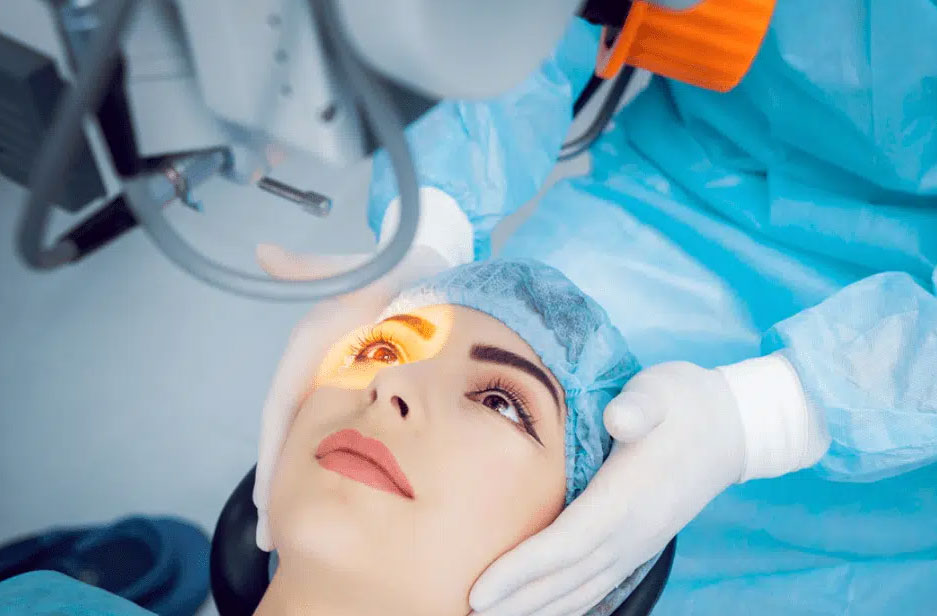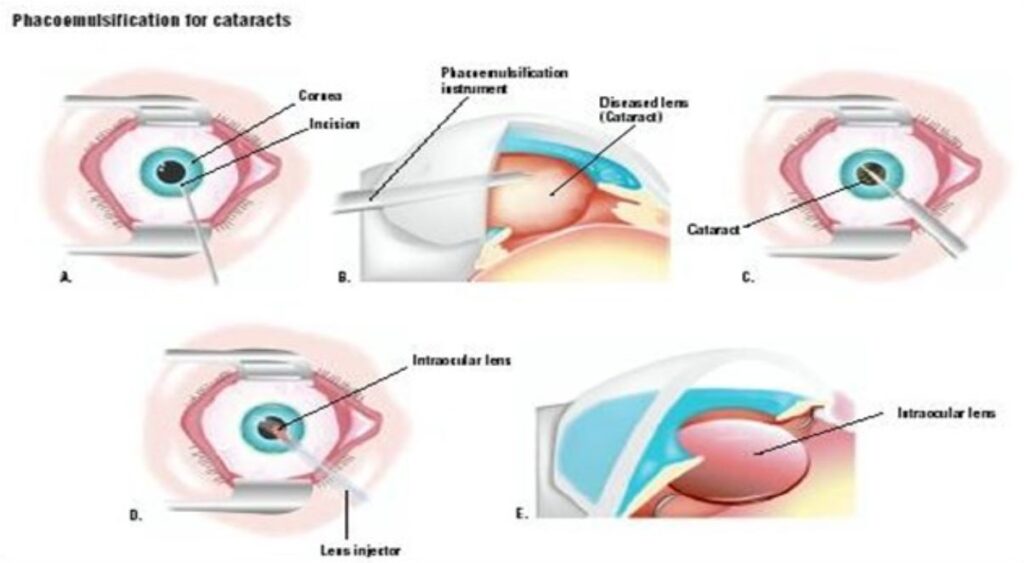Phacoemulsification Cataract Surgery
Is a surgery used to restore vision in people with cataracts, or clouding of the eye’s lens? This type of cataract surgery uses ultrasonic waves to break the lens into tiny pieces, which are then suctioned out of the eye with a vacuum. The procedure is completed by replacing the damaged lens with an artificial one. Phacoemulsification is performed with a sophisticated device referred to as a phaco machine. It consists of a hand piece, foot pedal, irrigation and aspiration system, and a variety of tips bent at different angles to accurately deliver the ultrasonic energy.

Preparing For Phacoemulsification
Phacoemulsification is an increasingly common surgery performed in an operating room with sterile drapes, gowns, and gloves. It generally takes 10 to 20 minutes to complete, not including recovery time. Phacoemulsification is performed on an outpatient basis. Depending on your age, the severity of your cataracts, and other factors, one or more anesthetics may be used to lessen pain and discomfort.

- Topical anesthesia, such as lidocaine, applied directly to the eye.
- Anesthetic eye blocks, such as Marcaine (bupivacaine), injected into the eye.
- Facial nerve blocks, using Marcaine and lidocaine, to prevent eyelid movement.
- General anesthesia for children, people with traumatic eye injuries, or those who are distressed
- Once the anesthesia is delivered and begins to take effect, you are laid on a plastic-covered operating table, and your eyelid is held open with a device known as an eye speculum.
Phacoemulsification Steps
Phacoemulsification can vary from one person to the next, but it tends to follow the same steps irrespective of a person’s age or the severity of their condition:
- A replacement lens made of silicone or acrylic—called an intraocular lens implant (IOL)—is then inserted into the capsule to replace the damaged lens.
- Because the incision is smaller than traditional cataract surgeries, no stitches needed.
Recovery:
- After the surgery, you will be wheeled to a recovery room and monitored until the effects of the anesthesia have worn off (usually within 30 minutes). Once you are given the OK to leave, a friend or family member should drive you home as your vision will likely be cloudy for a while
- When you arrive home, take it easy and rest as much as you can. If you see popped blood vessels or bruising around your eye, rest assured that these side effects are normal and should fade within a few days.
- Once you are rested, you can watch TV in moderation, shower or bathe, and work on the computer. Avoid swimming pools and hot tubs for at least a week. You should also avoid cooking during the same timeframe to prevent getting any grease, aerosolized oils, or splatters in your eyes.
- For the next few weeks, avoid any activities that can get dust, dirt, or grit in your eyes (such as mowing the lawn). If you have to go out on a windy day, put on eyewear that covers as much of the eye as possible, including the sides.
- If your surgeon prescribed antibiotic eye drops, take them to completion even if your vision is good and your eyes seem perfectly normal. Most antibiotic eye drops are prescribed for seven to 10 days.


